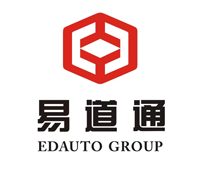For tourists who have frequently visited the Middle East in the past, they will always find one constant phenomenon: large American cars, such as GMC, Dodge and Ford, are very popular here and have become the mainstream in the market. These cars are almost ubiquitous in countries such as the United Arab Emirates and Saudi Arabia, leading people to believe that American car brands dominate these Arab car markets.
Although European brands such as Peugeot, Citroën and Volvo are also geographically close, they appear less frequently. Meanwhile, Japanese brands such as Toyota and Nissan also have a strong presence in the market as some of their well-known models, such as the Pajero and Patrol, are loved by locals. Nissan’s Sunny, in particular, is widely favored by South Asian migrant workers because of its affordable price.
However, over the past decade, a new force has emerged in the Middle East automotive market – Chinese automakers. Their influx has been so rapid that it has become a challenge to keep up with their numerous new models on the roads of multiple regional cities.
For tourists who have frequently visited the Middle East in the past, they will always find one constant phenomenon: large American cars, such as GMC, Dodge and Ford, are very popular here and have become the mainstream in the market. These cars are almost ubiquitous in countries such as the United Arab Emirates and Saudi Arabia, leading people to believe that American car brands dominate these Arab car markets.
Although European brands such as Peugeot, Citroën and Volvo are also geographically close, they appear less frequently. Meanwhile, Japanese brands such as Toyota and Nissan also have a strong presence in the market as some of their well-known models, such as the Pajero and Patrol, are loved by locals. Nissan’s Sunny, in particular, is widely favored by South Asian migrant workers because of its affordable price.
However, over the past decade, a new force has emerged in the Middle East automotive market – Chinese automakers. Their influx has been so rapid that it has become a challenge to keep up with their numerous new models on the roads of multiple regional cities.
Brands such as MG, Geely, BYD, Changan, and Omoda have quickly and comprehensively entered the Arab market. Their prices and speed of launch have made traditional American and Japanese automakers look increasingly expensive. Chinese automakers are continuing to make inroads into these markets, whether with electric or gasoline vehicles, and their offensive is fierce and shows no signs of abating.
Interestingly, although Arabs are often considered to be spendthrifts, in recent years many have begun to pay more attention to cost-effectiveness and are more inclined to buy small-displacement cars rather than large-displacement American cars. This price sensitivity appears to be being exploited by Chinese automakers. They introduced several similar models to the Arab market, mostly with petrol engines.
Unlike their northern neighbors across the Gulf, the models offered to Saudi Arabia, the United Arab Emirates, Bahrain and Qatar tend to be high-end models for the Chinese market, sometimes even surpassing in some respects the models of the same brand purchased by Europeans. Chinese carmakers have clearly done their fair share of market research, as price competitiveness is undoubtedly a key factor in their rapid rise in the Arab market.
For example, Geely’s Xingrui is similar in size and appearance to South Korea’s Kia, while the same brand also launched the Haoyue L, a large SUV that is very similar to the Nissan Patrol. In addition, Chinese car companies are also targeting European brands such as Mercedes-Benz and BMW. For example, the Hongqi brand H5 retails for US$47,000 and offers a warranty period of up to seven years.
These observations are not groundless, but are supported by hard data. According to statistics, Saudi Arabia has imported a whopping 648,110 vehicles from China in the past five years, becoming the largest market in the Gulf Cooperation Council (GCC), with a total value of approximately 36 billion Saudi riyals ($972 million).
This import volume has grown rapidly, from 48,120 vehicles in 2019 to 180,590 vehicles in 2023, an increase of 275.3%. The total value of cars imported from China also increased from 2.27 billion Saudi riyals in 2019 to 11.82 billion Saudi riyals in 2022, although it fell slightly to 10.5 billion Saudi riyals in 2023, according to the Saudi General Authority for Statistics. Yar, but the total growth rate between 2019 and 2023 still reached an astonishing 363%.
It is worth mentioning that Saudi Arabia has gradually become an important logistics center for China’s automobile re-export imports. From 2019 to 2023, approximately 2,256 cars were re-exported through Saudi Arabia, with a total value of more than 514 million Saudi riyals. These cars were eventually sold to neighboring markets such as Iraq, Bahrain and Qatar.
In 2023, Saudi Arabia will rank sixth among global car importers and become the main export destination for Chinese cars. Chinese automobiles have entered the Saudi market for more than ten years. Since 2015, their brand influence has continued to increase significantly. In recent years, cars imported from China have surprised even Japanese and American competitors in terms of finish and quality.
Post time: Jul-03-2024


